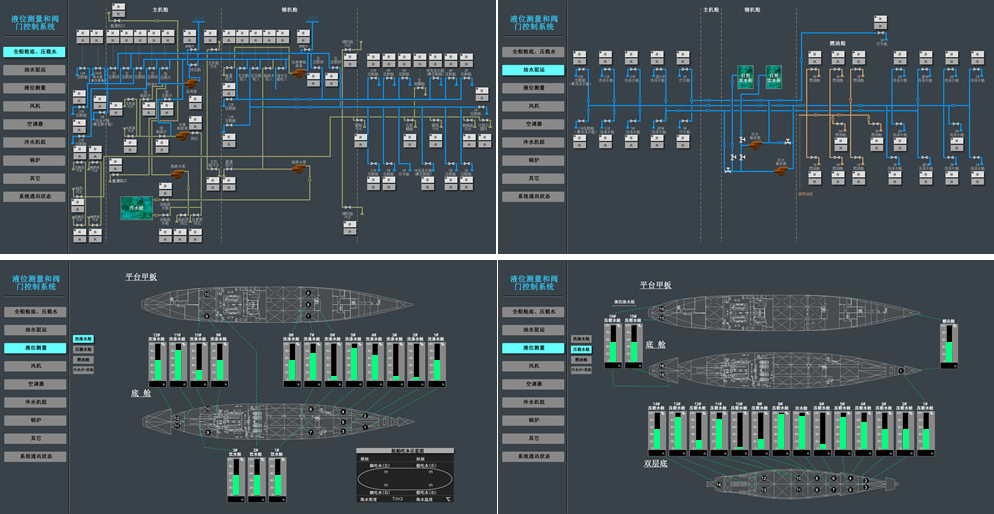 Level Remote Control System & Valve Remote Control System
Level Remote Control System & Valve Remote Control System 
SB-LV liquid level telemetry system, for the measurement of the liquid level status of the oil tank and water tank of the ship, domestic has been using the method of manual, scale. This measurement method is primitive, time-consuming and labor-intensive, and the measurement value is extremely rough. Especially in the refueling, water, because the pump into the liquid volume is fast and manual measurement is slow, often occur in the cabin full of overflow. More importantly, it is not easy for the commanding officer to get an accurate and overall concept of the oil and water storage capacity of the whole ship in a short time. With the improvement of the overall technology level of the ship, the liquid level telemetry system is born out of the need. This system adopts the upper unit configuration monitoring software for data and signal acquisition, with advanced and reliable performance, intuitive display, and easy operation, which fills a gap in ship monitoring automation.
SB-RCV-I valve remote control system, valve remote control system is a very important system in ships, it is generally used in ballast system and cargo and fuel oil transfer system of cargo ships. The system can remotely control the opening and closing of valves in the control room, so that the crew can conveniently transfer ballast water and fuel oil to obtain the desired draught state of the ship to meet the requirements of various working conditions of the ship. The system is used in the cargo oil system of oil tanker, which is the economic lifeline of the ship, and the loading and unloading of cargo oil depends on the safe and reliable work of the valve remote control system.
The valve remote control system also solves the problems of some places where the crew cannot enter and operate the valves at any time and the large workload of remote valve operation. The emergence of the valve remote control system greatly reduces the work intensity of the crew, reduces unnecessary work hazards, further safeguards the safety of the crew, and ensures the safe navigation and economic efficiency of the ship.


